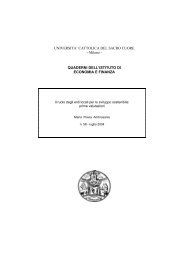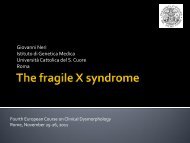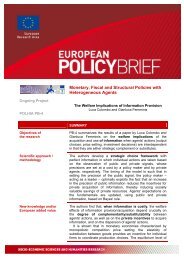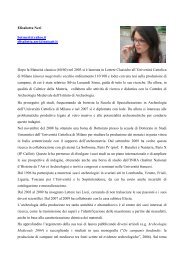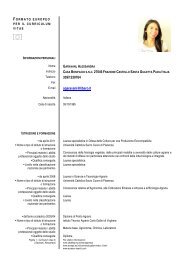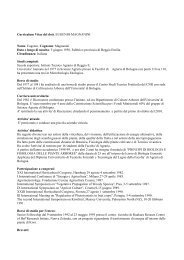UNIVERSITA' CATTOLICA DEL SACRO CUORE - Milano - Istituti
UNIVERSITA' CATTOLICA DEL SACRO CUORE - Milano - Istituti
UNIVERSITA' CATTOLICA DEL SACRO CUORE - Milano - Istituti
You also want an ePaper? Increase the reach of your titles
YUMPU automatically turns print PDFs into web optimized ePapers that Google loves.
INTRODUCTION<br />
Following technological and theoretical developments, in the Nineties many<br />
previously monopolized network industries were gradually opened to some form<br />
of competition: among the others, telecommunications undoubtedly represents a<br />
seminal example of liberalized utility.<br />
In the European context, the liberalization process has often been driven by EC<br />
directives, with the main exception of the pioneering experiences in the United<br />
Kingdom. Within the boundaries of the framework depicted by European<br />
Institutions, several solutions have been adopted throughout the Continent to<br />
regulate the same industry, according to country-specific industrial needs and<br />
socio-political perceptions.<br />
Policy makers, scholars and regulated firms seems to have quite different opinions<br />
with regard to the degree of efficiency achieved by the (still ongoing) process of<br />
liberalization of European telecommunications; such differences are only partially<br />
explicable considering the different interest they represent.<br />
The European paradigm of facility-based competition appears to have slowed<br />
down the pace towards full competition, instead of gaining momentum. In Italy, in<br />
particular, dissatisfaction is mounting about the degree of effective competition<br />
achieved in fixed telecommunications and, inevitably, the regulatory design<br />
adopted in the Nineties is subject to harsh criticisms.<br />
Several real life events (in Italy as well as in other Member States) confirm the<br />
theoretical predictions of strategic behavior on the part of the vertically integrated<br />
incumbent in order to deter entry. Both the National Regulatory Authority<br />
(Agcom) and the Italian Competition Authority (Agcm) have played a major role<br />
in the promotion and protection of competition, mitigating or eliminating the<br />
anticompetitive effects of incumbent’s conducts. Notwithstanding the<br />
considerable efforts of Italian Authorities, the market of fixed telecommunications<br />
in Italy still show the highest incumbent’s market share all around Europe. For<br />
this reason, in recent times advocates of structural separation have grown both in<br />
number and in determination.<br />
In this paper we build over the recent debate on the feasibility and desirability of<br />
alternative vertical structures for the Italian fixed communication industry,<br />
considering in particular the structural separation of the ex-monopolist. After a<br />
brief introduction to the industry of fixed telecommunications, the analysis will<br />
first focus on the regulatory framework currently in force, characterized by<br />
vertical integration with accounting separation between network and commercial<br />
costs, stressing both its advantages and its potential drawbacks from the point of<br />
view of regulatory as well as competition policy. The study will then consider<br />
alternative industry design, in particular structural separation of the network from<br />
incumbent’s commercial divisions. In the final section we conclude.<br />
1




